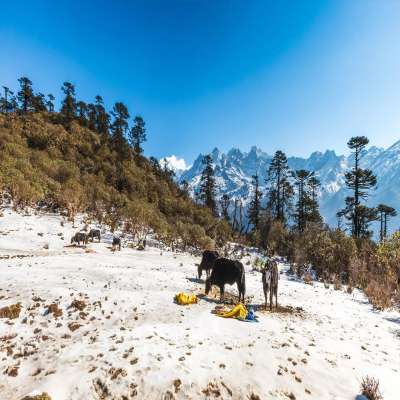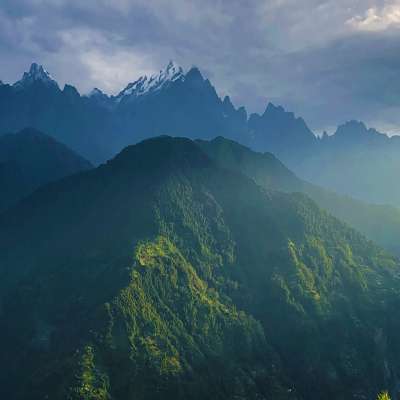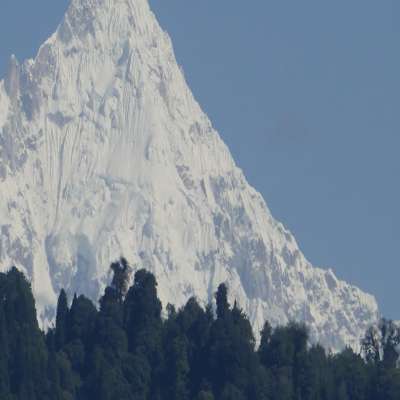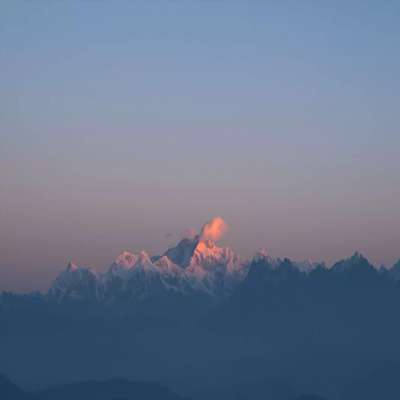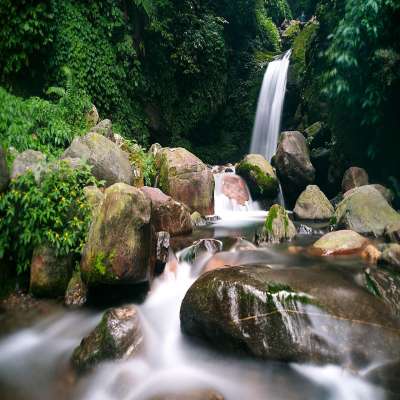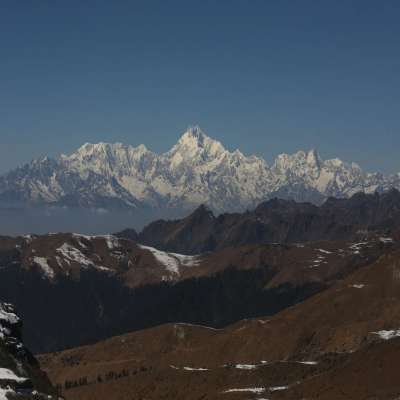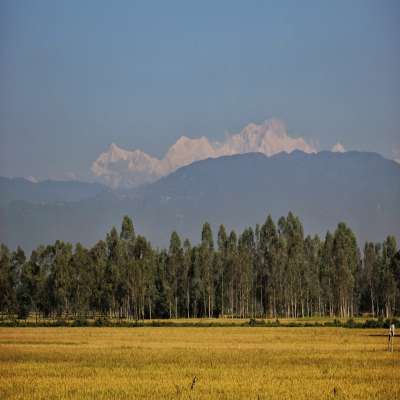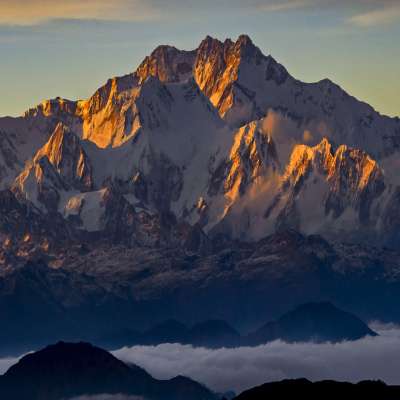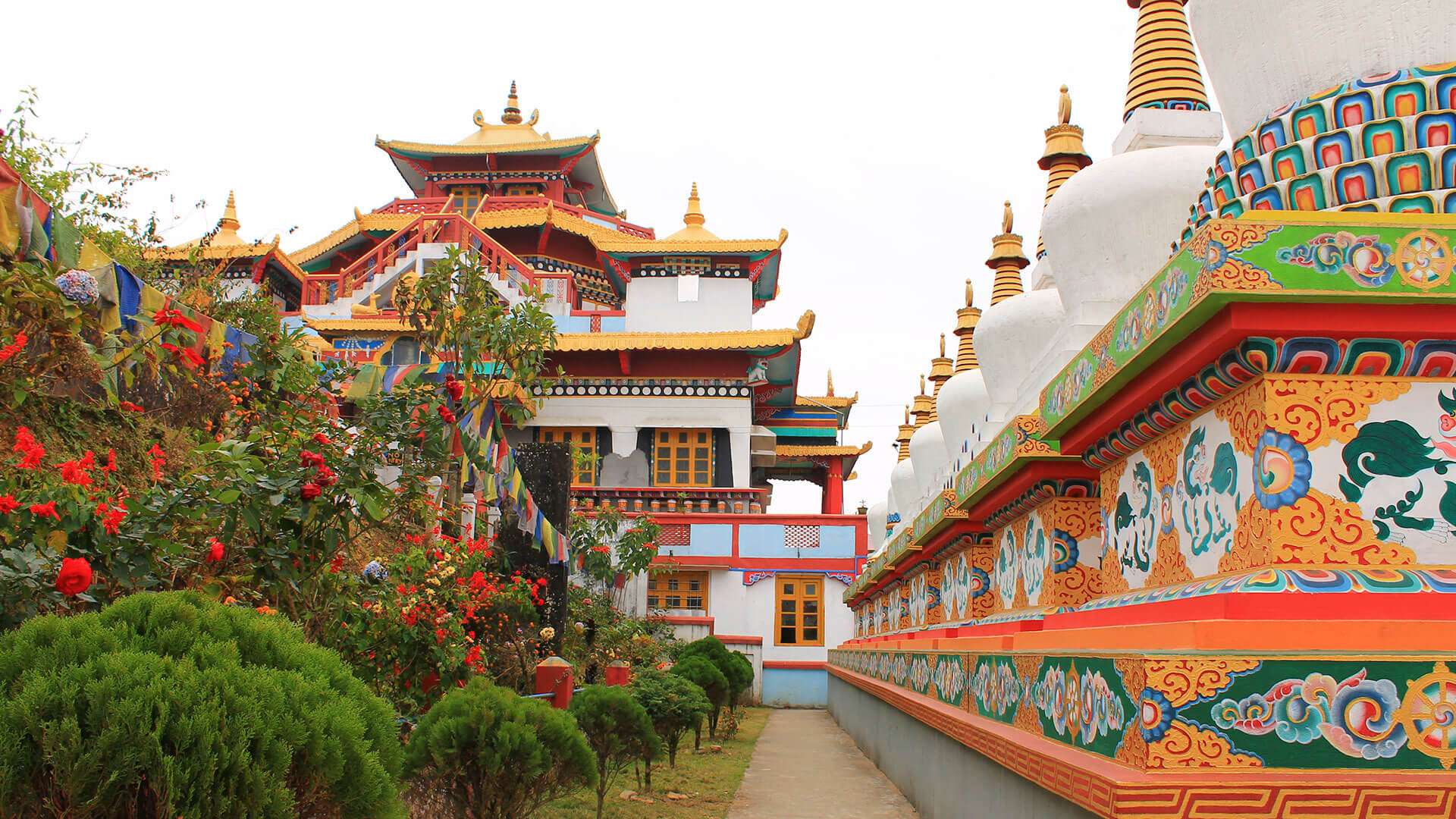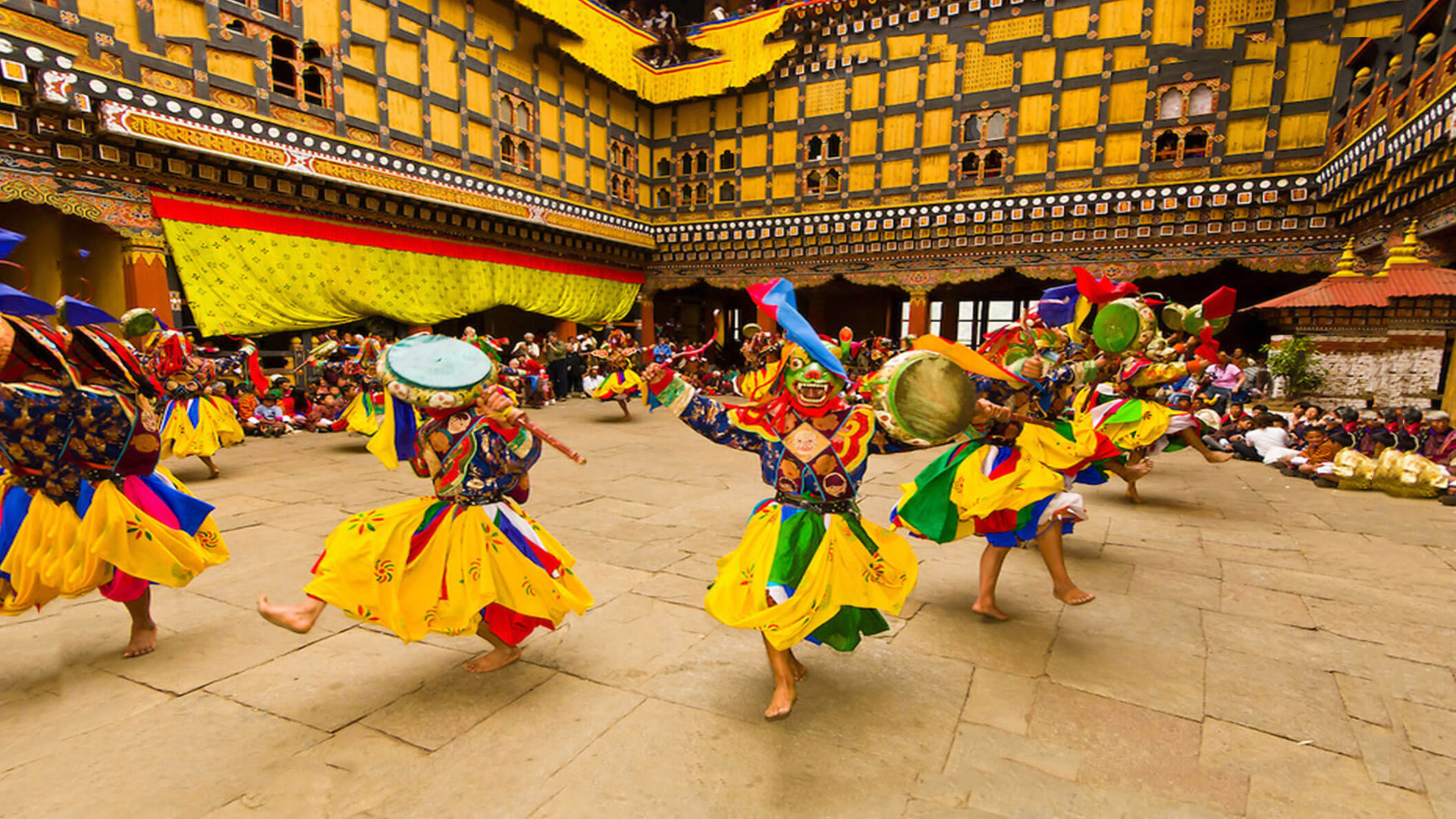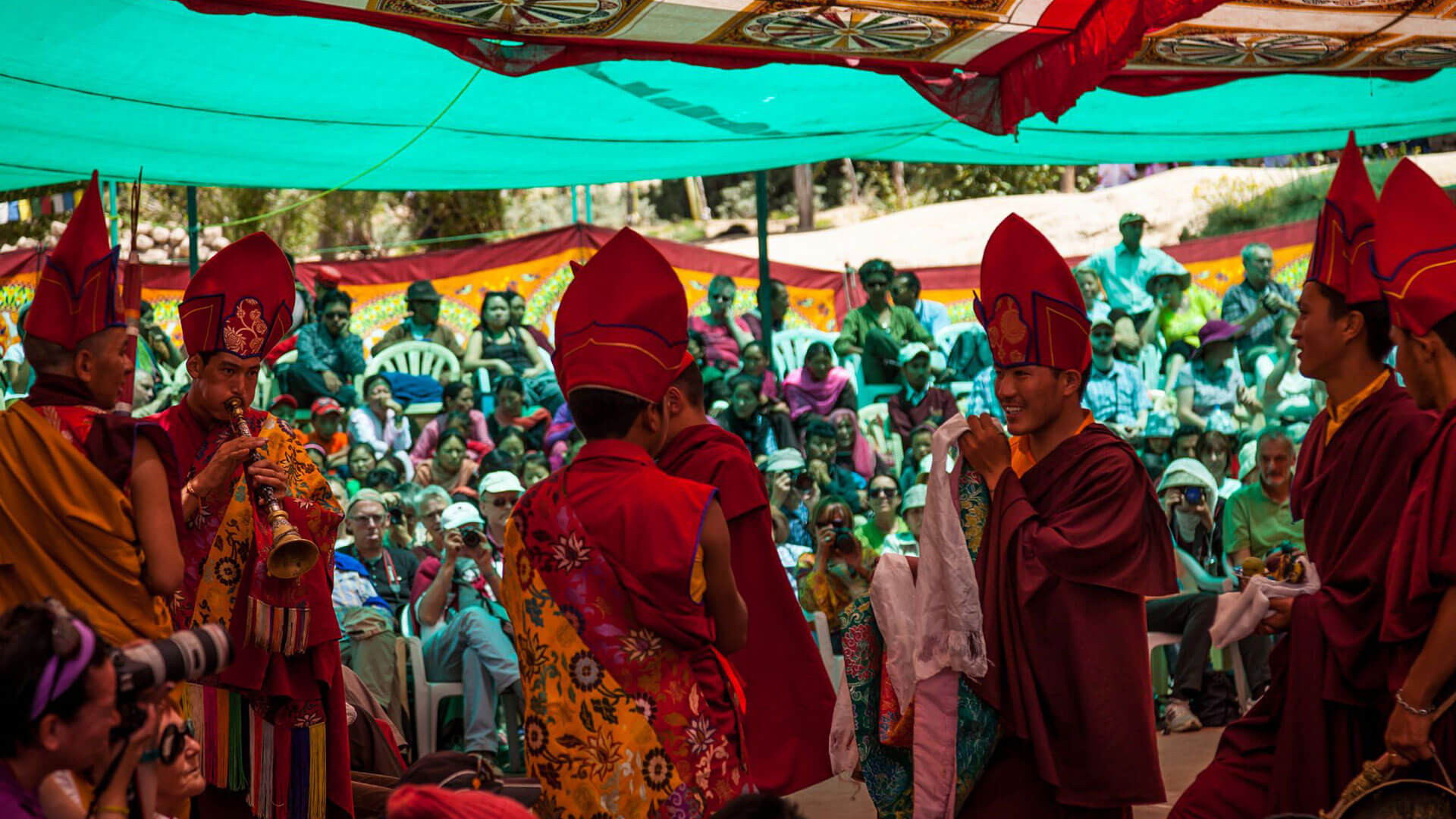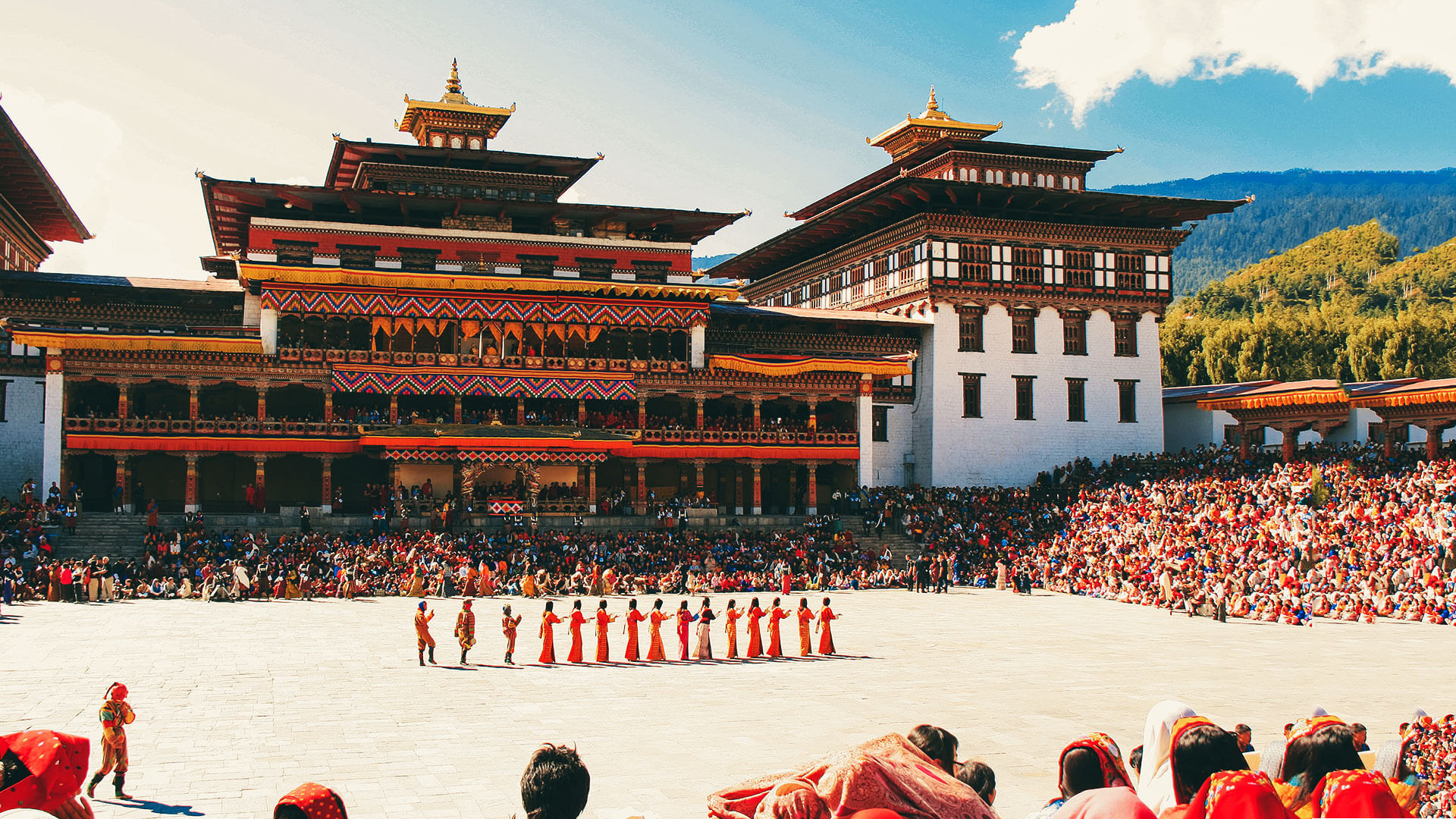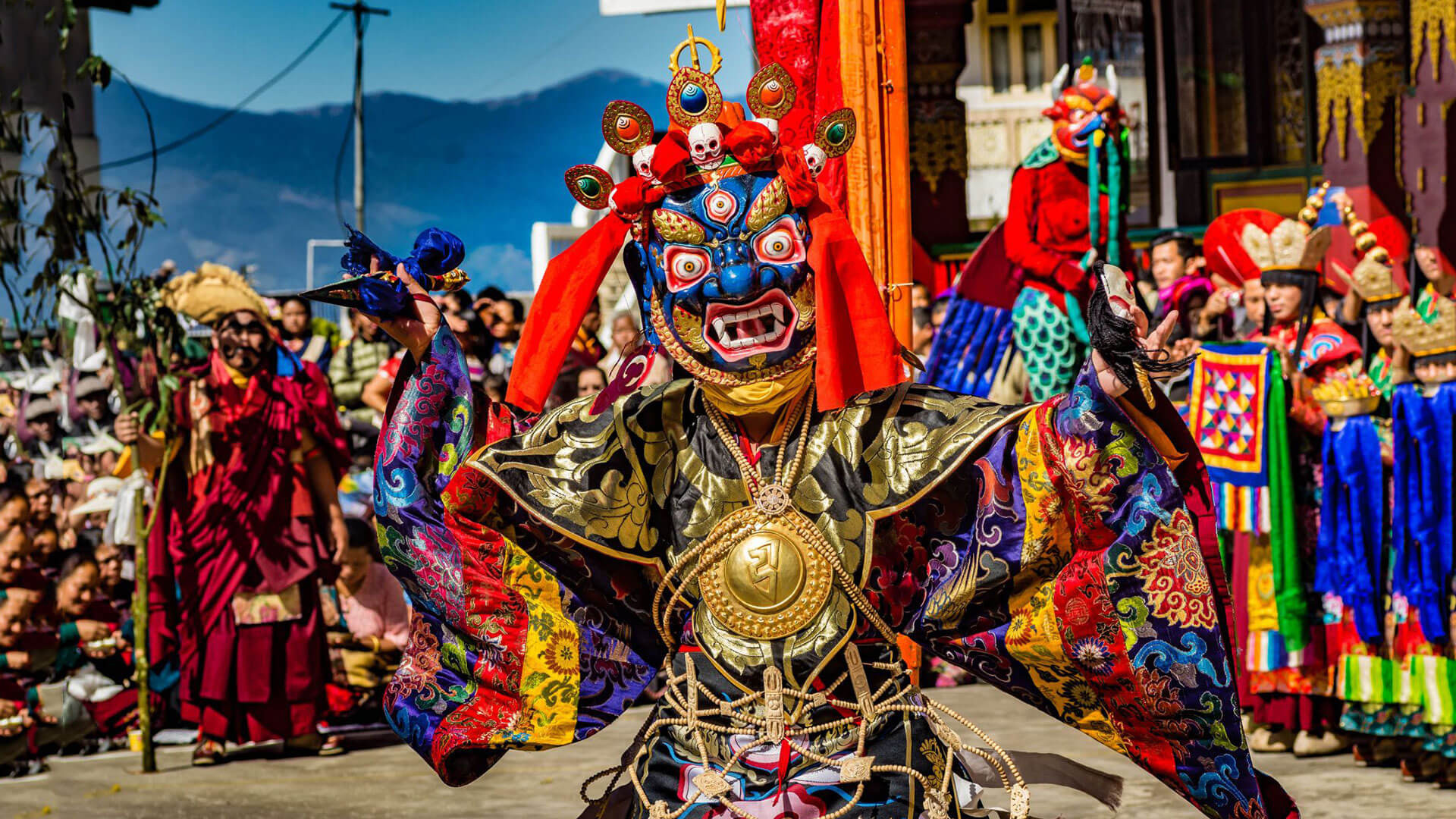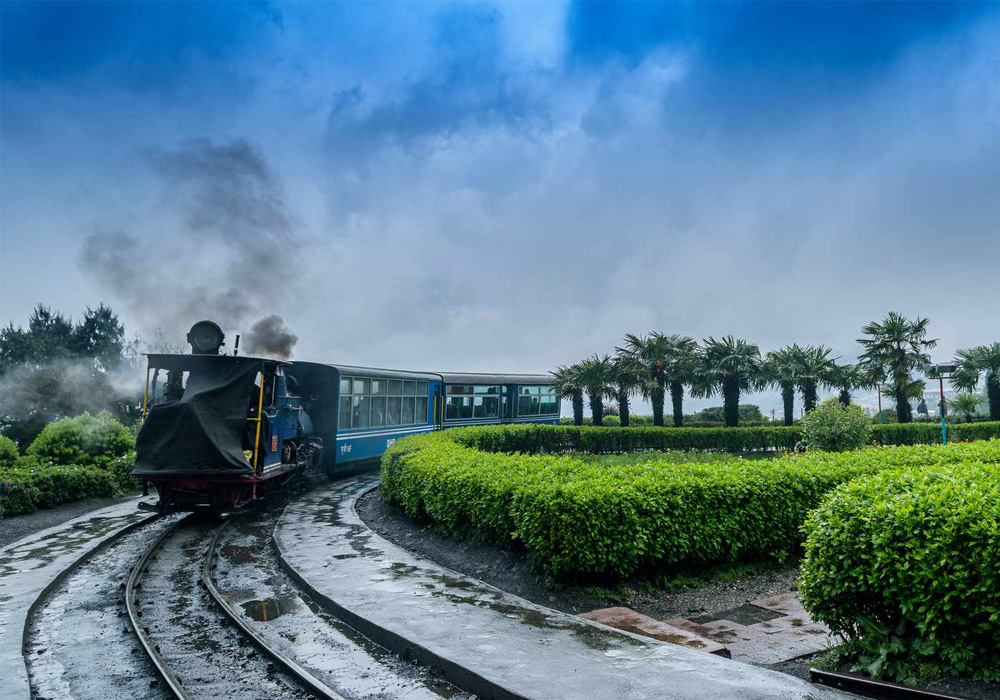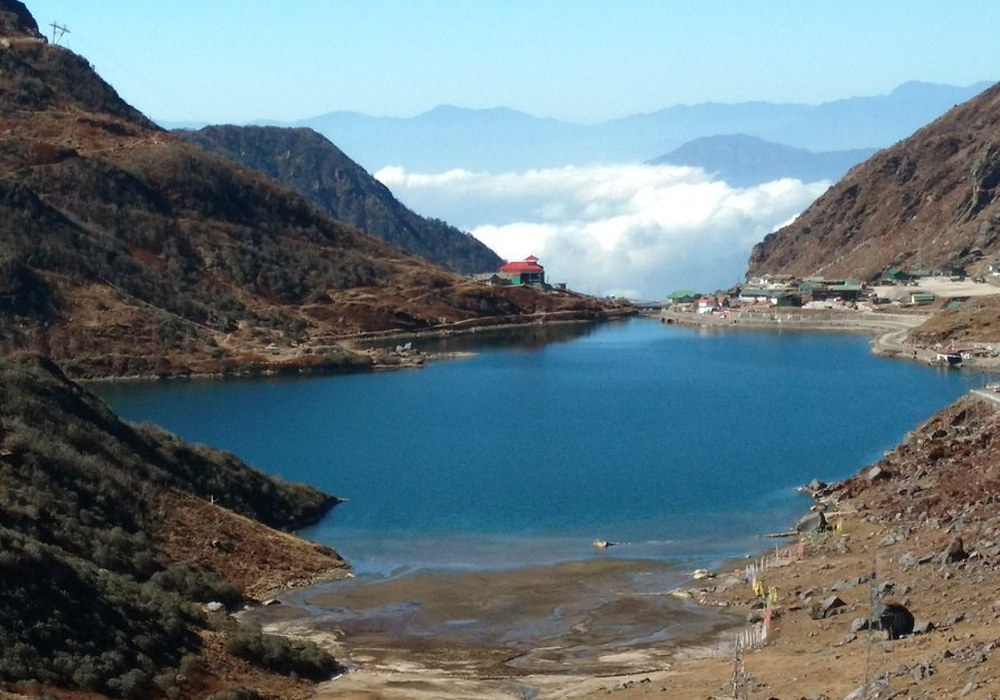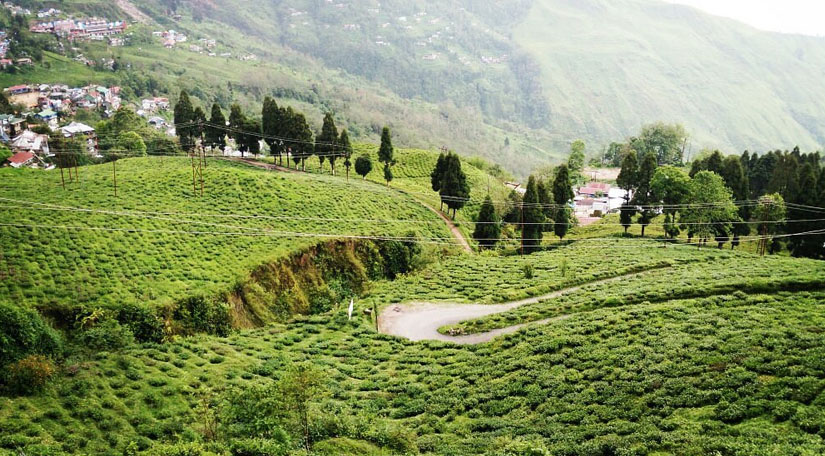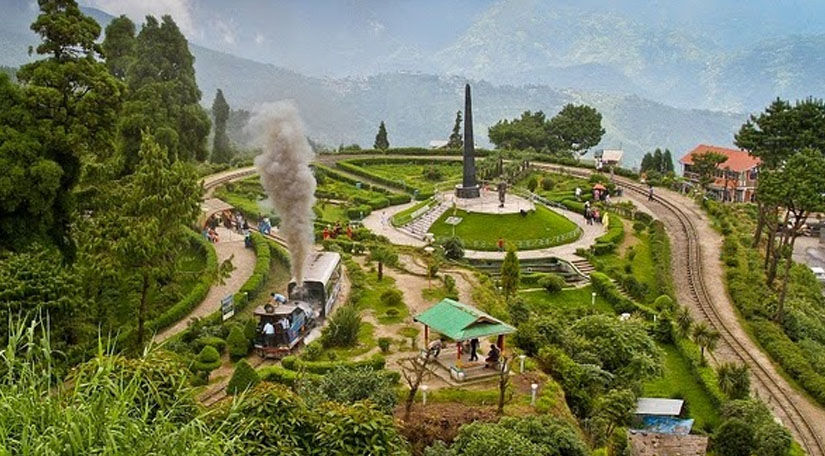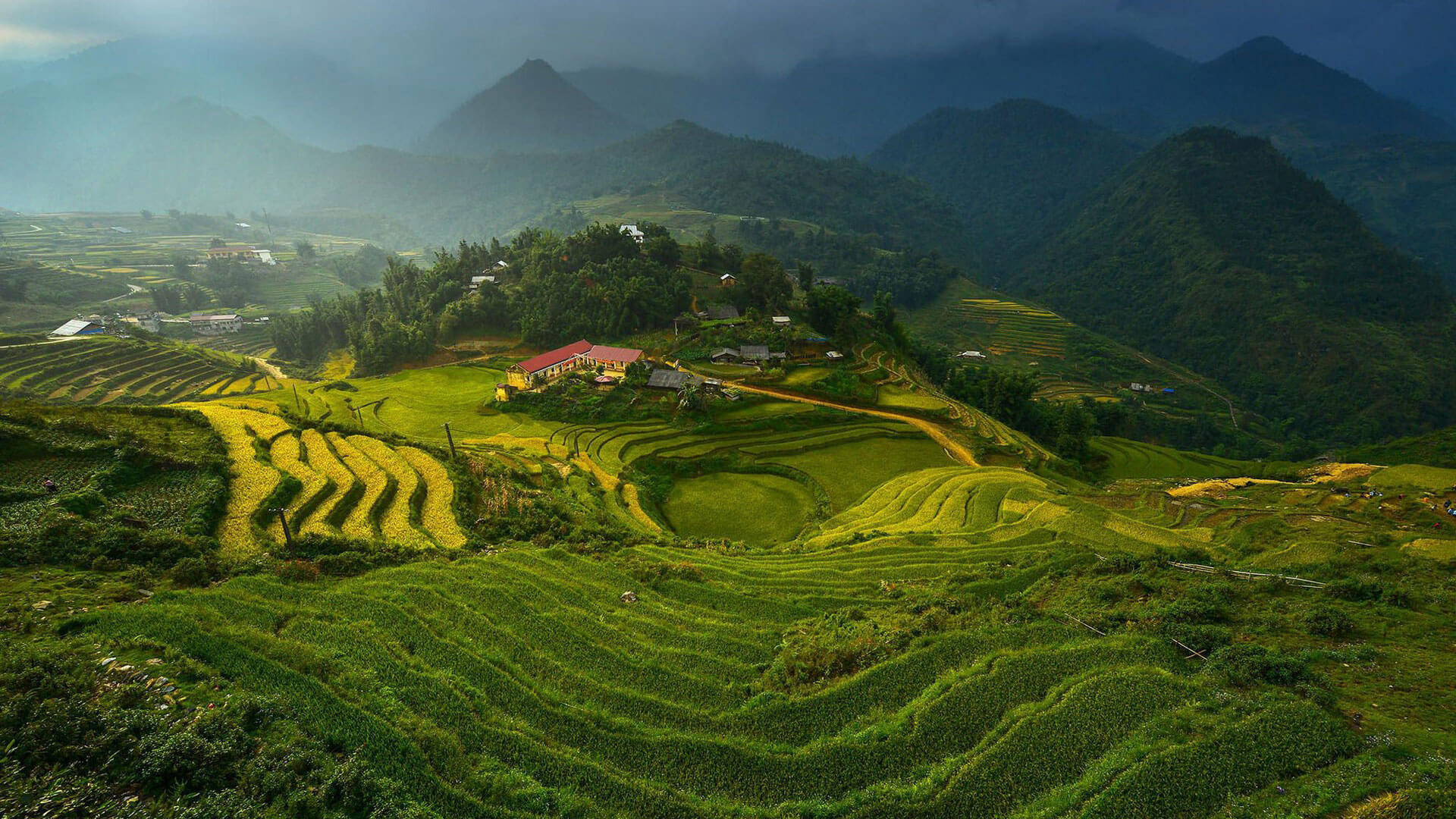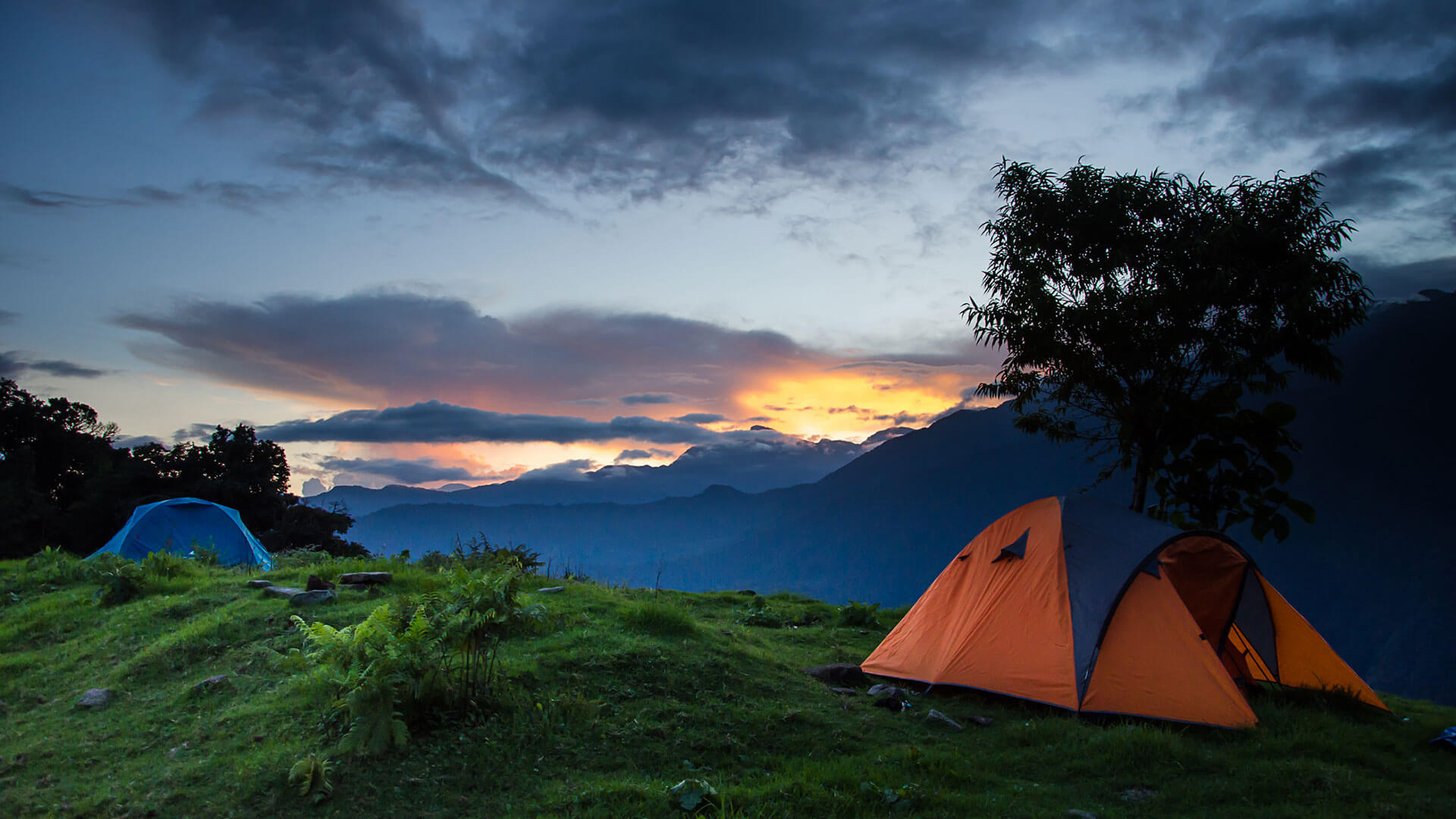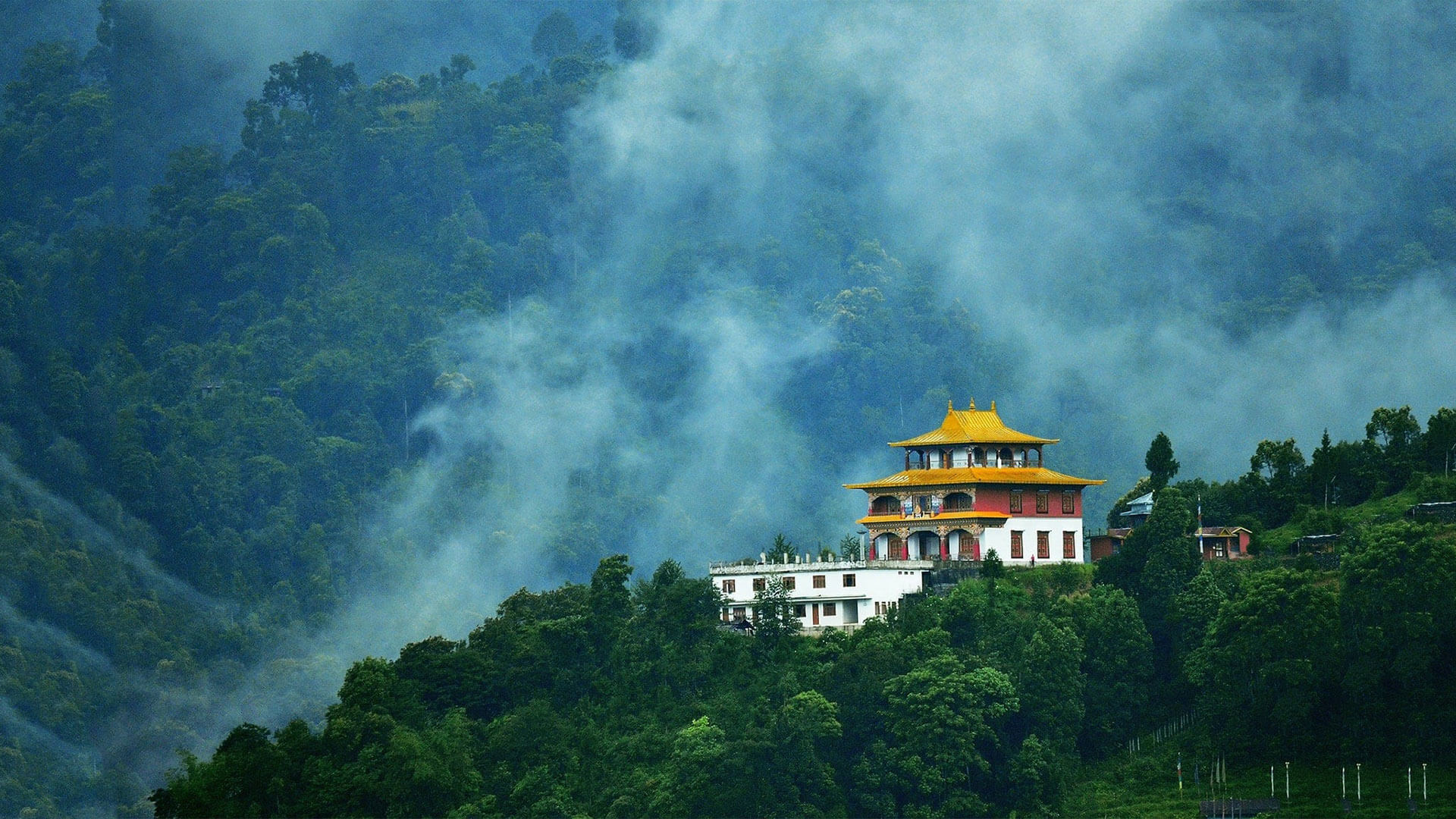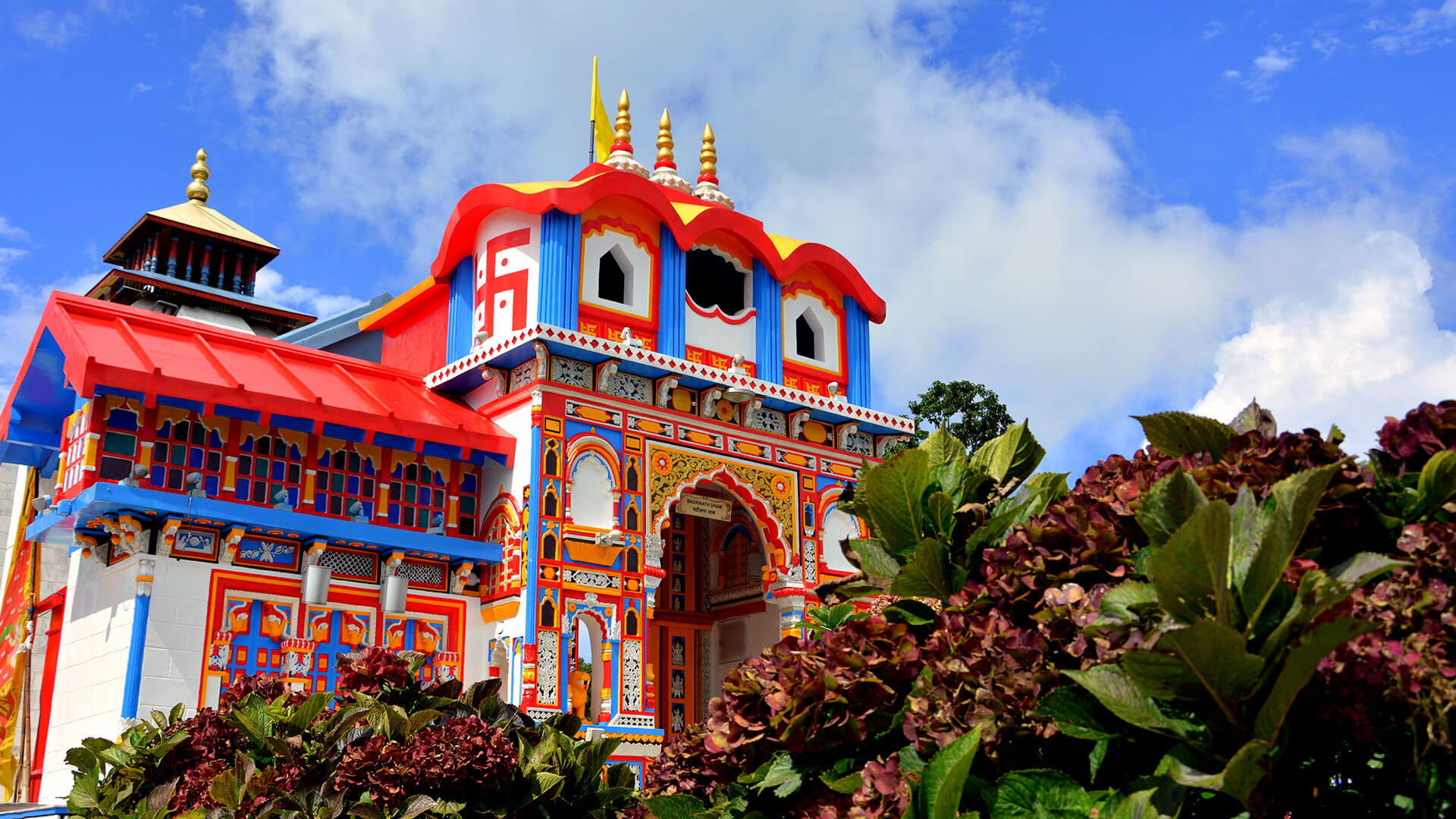Kanchenjunga Tourism: Trekking, Adventure & Travel Guide
Kanchenjunga is the third-highest mountain in the world, with an impressive height of 8,586 metres (28,169 feet). It is located in the eastern Himalayas, on the border between Nepal and the Indian state of Sikkim. Kanchenjunga is widely known for its breathtaking beauty and its five prominent peaks, often referred to as the "Five Treasures of Snow." These peaks symbolize treasures such as gold, silver, gems, grain, and holy scriptures, according to local legends.
The Kanchenjunga peak is not only stunning but also challenging to climb. It is considered one of the most difficult mountains for mountaineers due to its remote location, steep terrain, and unpredictable weather. Despite this, it attracts many climbers and trekkers from around the world who are eager to explore its untouched beauty. Unlike more famous mountains like Mount Everest, Kanchenjunga remains relatively quiet, offering a serene and adventurous experience for those who visit.
Apart from its majestic height, Kanchenjunga holds great cultural and spiritual significance for the local people of Sikkim and Nepal. It is regarded as a sacred mountain, and many believe that the spirits of the region protect it. The surrounding areas are home to diverse wildlife, including rare species like the snow leopard, red panda, and blue sheep, making it a haven for nature lovers as well. The landscape around the Kanchenjunga peak is also rich with alpine forests, glaciers, and beautiful valleys, providing a peaceful escape into nature.
Best Time to Visit Kanchenjunga
The climate of Kanchenjunga is generally pleasant throughout the year. The mountain and its glaciers receive heavy snowfall in summer and light snow in winter. Autumn is the best time to visit Kanchenjunga, as the mountains look very interesting and exciting at this time. Autumn offers clear skies that open up the world to witness the best up-close views of these majestic mountains. The beauty of the five peaks of Kanchenjunga is the main attraction of autumn. Spring brings a beautiful environment for trekking in this circuit. The temperature is adequate, which offers the trekkers an unparalleled wonder of vegetation on the trail. Wildlife can also be spotted during this time when they are exposed to the heat of the sun. A dense green forest covers the entire track until you reach the destination. Spring covers the lush green forest with new leaves, and you will never run out of spots to take photos. Summer, in information About Kanchenjunga, comes with frequent rains. This rainy season makes the tracks slippery and difficult to walk and limits the time and possibilities for observing mountain views. Since it is located in the eastern Himalayas, it suffers from monsoon moisture loss. So, Summer is not the best time to visit Kanchenjunga tourism.
If you want to experience Kanchenjunga tourism, terribly cold winds, and a bad snowfall in the closed chaos, choose January. Moreover, Kanchenjunga does not have an "easy" winter path because the threat of snowfall is high. The highest crowds are seen in the Kanchenjunga hills in October. What many people have avoided for a long time has become a trend and test of their physicality. So, if you don't have a holiday constraint, choose November, and you will have a lot to explore and trek. Beautiful landscape, good weather, a huge group of trekkers with huge discount minus, a perfect combo!
Culture of Kanchenjunga
Kanchenjunga, the third-highest mountain in the world, holds deep spiritual and cultural significance for the people of Sikkim and Nepal. Considered sacred, it is believed to be the abode of deities, with its five peaks symbolising "Five Treasures of Snow" (gold, silver, gems, grain, and sacred scriptures).
For the Lepcha and Bhutia people of Sikkim, the mountain is a revered guardian, and many local festivals, such as the Khangchendzonga Festival, celebrate its protective powers. The Sherpa community in Nepal also respects the mountain, often avoiding the summit in reverence to its spiritual presence.
Rituals, prayers, and offerings are performed before expeditions to seek the blessings of mountain deities. Monasteries in the region, adorned with colorful prayer flags, further highlight its spiritual importance. Conservation efforts in both Sikkim and Nepal aim to preserve the natural and cultural heritage of the Kanchenjunga region.
History of Kanchenjunga
Kanchenjunga’s history is as captivating as its towering peaks. Once believed to be the tallest mountain in the world, its status shifted in 1856 following the Great Trigonometrical Survey of India conducted in 1849. Through this groundbreaking survey, Mount Everest was officially recognized as the highest peak on Earth, and Kanchenjunga took its place as the third tallest. Despite this change, Kanchenjunga remains a mountain of immense significance. Revered in local mythology and deeply intertwined with religious traditions, its majestic slopes have been familiar to generations of priests and merchants for centuries.
Top Attractions Around Kanchenjunga
There are a million things to witness and a million more emotions to experience in the surroundings of the highest mountains in India. Kanchenjunga has some marvelous places nearby, which is worth visiting.
- Goechala – This high mountain pass is a favourite for trekkers and offers breathtaking views of Kanchenjunga and other Himalayan peaks. The trek is challenging but rewarding, with stunning landscapes, forests, and alpine meadows.
- Yuksom – The historical town of Yuksom is the gateway to the Kanchenjunga National Park and a starting point for treks to the mountain. It’s also known for its serene monasteries and rich cultural heritage.
- Kanchenjunga National Park – A UNESCO World Heritage site, this park is a biodiversity hotspot with rare wildlife species like snow leopards, red pandas, and Himalayan black bears. The pristine beauty of the park, combined with the grandeur of Kanchenjunga, makes it a must-visit for nature lovers.
- Tashiding Monastery – One of the holiest Buddhist monasteries in Sikkim, Tashiding is nestled amidst mountains and forests, offering peace and spirituality to visitors. It’s a great spot to soak in the local culture and spiritual ambiance.
- Pelling – A small town with panoramic views of Kanchenjunga, Pelling is popular among travellers seeking to experience the Himalayan landscape. The town also features monasteries, waterfalls, and the impressive Pemayangtse Monastery.
- Lachung – Located in North Sikkim, Lachung is a picturesque village surrounded by snow-capped peaks and waterfalls. It's known for its natural beauty and provides a base for visiting the Yumthang Valley, often called the “Valley of Flowers.”
- Zemu Glacier – For the adventure seekers, a trek to Zemu Glacier offers an unforgettable journey through pristine wilderness, with the chance to see Kanchenjunga up close. It’s one of the longest glaciers in the Himalayas.
Trekking Experiences at Kanchenjunga
1. Kanchenjunga Circuit Trek (Nepal Side)
A comprehensive loop covering both North and South Base Camps.
- Duration: 20-25 days.
- Difficulty: Challenging (requires advanced trekking skills).
- Highlights: Remote valleys, Tibetan monasteries, wildlife encounters.
2. Kanchenjunga Base Camp Trek (India Side)
A shorter but equally mesmerizing trek from Yuksom to Goechala
- Duration: 10-15 days.
- Difficulty: Moderate to High (suitable for experienced trekkers).
- Highlights: Close-up views of Kanchenjunga, rhododendron forests, alpine meadows.
Adventure Activities at Kanchenjunga
- High-Altitude Trekking: Explore challenging and remote trails.
- Photography Tours: Capture the grandeur of the Himalayan peaks and diverse landscapes.
- Cultural Tourism: Engage with the unique traditions of Sherpa, Tibetan, and Limbu communities.
- Wildlife Exploration: Visit the Kanchenjunga National Park, a UNESCO World Heritage Site.
Travel Essentials for Kanchenjunga
Permits:
- India: Restricted Area Permit (RAP) for foreign nationals in Sikkim.
- Nepal: Kanchenjunga Conservation Area Permit (KCAP) and TIMS card.
What to Pack:
- Warm layers (sub-zero temperatures).
- Trekking poles and sturdy boots.
- First aid kit, including altitude sickness medication.
Accommodation:
- Teahouses (basic facilities) on the Nepal side.
- Camping is mandatory in remote areas of Sikkim.
How to Reach Kanchenjunga
Kanchenjunga Tourism has left a remarkable landmark in tourism history for enjoying its picturesque beauty. Tourists from different places visit this highest mountain peak in India throughout the year. Reaching it is very easy as the place is well-connected with different parts of the country. All three modes of transport can help the visitors reach this awe-inspiring destination.
- Nearest Famous City. Gangtok
- Nearest Airbase. Gangtok
- Nearest Railhead. Darjeeling Station
- Distance from Gangtok. 61.7 Km
By Air
Kanchenjunga does not have its own airport. The nearest airport to reach this stunning destination is in Gangtok. The Gangtok airport caters to flights from different parts of the country. It is well-connected with major cities of the country. Another airport that can be used to reach Kanchenjunga is Bagdogra Airport. After deboarding at the airport, the visitors can hire a private cab or board a state transport bus to complete their journey.
- Distance from Gangtok Airport. 61.7 Km
- Distance from Bagdogra Airport. 114 Km
Here is a list of Indian cities from where flights are available to Kanchenjunga
- Kolkata to Bagdogra Flight
- Delhi to Bagdogra Flight
- Mumbai to Bagdogra Flight
- Guwahati to Bagdogra Flight
- Chennai to Bagdogra Flight
By Rail
The nearest railway station to Gangtok is Darjeeling. A direct train is also available to the station and covers 85.5 km of the distance by a hired taxi. There are several trains that run between different parts of the country and ferry passengers to Darjeeling, the closest station to reach Kanchenjunga.
- Distance from Darjeeling Railway Station. 74.7 Km
By Road
Kanchenjunga is easily accessible by road. It is well-connected with different towns and cities of the state and parts of the country. Both private and state-run buses ply their services for the passengers who wish to explore Kanchenjunga. Many visitors plan a trip to this beautiful destination by their own car.
- Distance From Darjeeling. 74.4 Km
- Distance From Gangtok. 61.7 Km
- Distance From Pelling. 43.5 Km
- Distance From Yuksom. 120 Km
- Distance From Kolkata. 570 Km
- Distance From Delhi. 1087 Km
- Distance from Mumbai. 1826 Km
FAQs Related to Kanchenjunga
1. What is Kanchenjunga?
Kanchenjunga is the third-highest mountain in the world, located in the Himalayas along the border between Nepal and Sikkim, India. It has an elevation of 8,586 meters (28,169 feet).
2. Where is Kanchenjunga located?
Kanchenjunga is located in the eastern Himalayas, straddling the border between Nepal and the Indian state of Sikkim. It lies in the Kanchenjunga Conservation Area in Nepal and the Khangchendzonga National Park in India.
3. How tall is Kanchenjunga?
Kanchenjunga has an elevation of 8,586 metres (28,169 feet), making it the third-highest mountain in the world after Mount Everest and K2.
4. Why is Kanchenjunga called the "Five Treasures of Snow"?
Kanchenjunga is often referred to as the "Five Treasures of Snow" because of its five distinct peaks. Local traditions associate these peaks with treasures of gold, silver, gems, grain, and divine scriptures.
5. When was Kanchenjunga first climbed?
Kanchenjunga was first summited on May 25, 1955, by a British expedition led by Joe Brown and George Band. However, respecting local religious beliefs, they stopped short of the actual summit.
6. What makes climbing Kanchenjunga challenging?
Climbing Kanchenjunga is extremely challenging due to its remote location, unpredictable weather, risk of avalanches, and the steep and technical nature of its slopes. It is considered one of the most dangerous peaks for mountaineers.
7. Is Kanchenjunga visible from Darjeeling?
Yes, Kanchenjunga is visible from Darjeeling, a popular hill station in West Bengal, India. On clear days, the snow-capped peaks of Kanchenjunga offer a breathtaking view.
8. What is the significance of Kanchenjunga in local culture?
Kanchenjunga holds deep spiritual and cultural significance for the people of Sikkim and Nepal. It is considered sacred, and local legends portray it as the abode of a powerful deity. In Sikkimese tradition, it is believed to be a protector of the region.
9. Can tourists visit Kanchenjunga?
Yes, tourists can visit the regions around Kanchenjunga. Trekking expeditions are popular in the Kanchenjunga Conservation Area in Nepal and Khangchendzonga National Park in India, where trekkers can experience breathtaking views of the mountain and its surroundings.
10. What wildlife can be found around Kanchenjunga?
The Kanchenjunga region is rich in biodiversity and is home to various species of wildlife, including the snow leopard, red panda, Himalayan black bear, and blue sheep. The area is also known for its diverse birdlife and unique alpine flora.
Popular Packages
Blogs

Famous Festivals of Sikkim – Celebrate Culture & Tradition

Famous Food Of Sikkim 2025 - Explore the Unique Flavors and Traditional Dishes

Snowfall Places in Sikkim 2025 - Top Destinations for Winter Adventures

16 Best Tourist Places To Visit Near Darjeeling In 2024

Top Tourist Places to Visit in Sikkim - Scenic Spots and Attractions
Nearby Stays
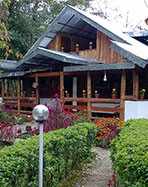
Limboo Homestay
Yuksom West. Sikkim, 737113
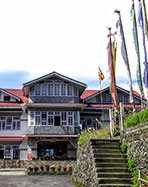
Red Palace Hotel
Yuksom Kothi, Yuksom, Sikkim 737113
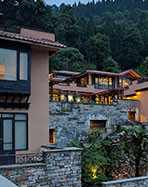
The Chumbi Mountain Resort & Spa
Naku Chumbon, Pelling, Sikkim, India 737...
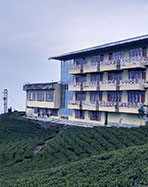
Cherry Resort
Temi Tea Garden, Namchi, South Sikkim 737126


